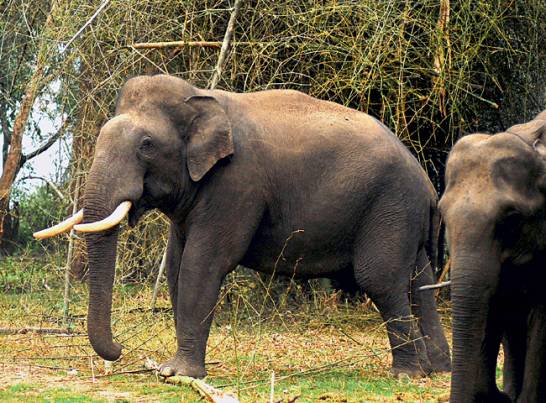 Pics: Harishvara Venkat.
Pics: Harishvara Venkat.
My father told me that he first took me to the jungle when I was six months old. It was then that my love for wildlife took root.
Ever since, I have been visiting wildlife sanctuaries in southern India. I would say wildlife is now a part of me.
I realised that after taking up wildlife photography seven years back. One of the best wildlife sanctuaries that I have visited is the Nagerhole National Park on the banks of Kabini River in Karnataka.
One gets to see leopards, tigers, elephants, dholes, Indian gaur, sambar deer and many other mammals and birds there.
After I started photographing wildlife, I developed a better understanding of the animal habitat and most importantly animal behavior, which in turn helps me predict what I can expect of a particular animal in a particular environment.
One of the finest moments I’ve had in Kabini was in June last year. It was my first trip to Kabini after I upgraded to a professional camera.
This time our naturalist spotted two leopards — a mother and cub — on a tree. For the next two-and-a-half hours we saw them devour a deer, play with each other climb up and down the tree, rest and eventually doze off.
Kabini has been a very promising place for me and has never failed to impress even in summer months when there is a drought.
During the hottest part of the year the Kabini River shrinks in size allowing all animals to come over to the riverbank for water, which is a treat to watch from a boat.
I still get to learn so many new things every time I visit the jungle. It’s been a pleasure doing this and it’s so invigorating to get out of the so called civilized world and live with the most organised living beings on earth.
Flashback
The city of Nagarhole was once ruled by the Lingayat kings of Kodagu till 1850s. The British took control of the city after defeating Tipu Sultan.
The presence of derelict irrigation tanks suggests that there were agricultural enclaves within the wooded landscape.
The forest department in 1860 was established by the colonial administration with an authorization to restrict forest burning, control farming, avert agricultural encroachments, and carry out sustainable reap of timber and to raise teak plantations.
Click away
After navigating two kilometres from the confluence of Panamaram river, Kabini forms an island called Kuruva Island, spreading over 520 acres with all kinds of flora and fauna.
It also forms Kabini reservoir bordering Kerala and Karnataka. Between Kabani reservoir and Kuruva island Kalindi River joins Kabini. This area is a photographers delight and a lot of travel enthusiasts go there to enjoy the nature.
Food
The Honey Comb resturant in Kabini is named after the honey gathering Jenu Kuruba tribe. They offer a platter of the cream of international and regional cuisine.
He ambience adds to the entire feel and for all you know, you would want to reach there an hour early for your dinner just to enjoy the location. The resturant is veru popular among tourists.
The beautiful ranges of Baltistan
Travelling Lens is organising a a trip to Baltistan. After almost 25 years of being closed to visitors, the proverbial doors to this ancient area of the Himalaya have been opened.
The area is tucked away in the far corner of the Nubra valley at the base of the Karakoram Range.
Three of the most celebrated award-winning photojournalists, Ami Vitale, Andrea Bruce and Maggie Stebber, will be conducting a Masterclass Photography Workshop during the course of travel. They will lead a group of photo enthusiasts on a one-of-a-kind, experience.
Also on the charts for the summer are our signature Basic Photography Workshops in Ladakh and our Guided Photo-Tour of Zanskar.
For further details about the workshop, log on to: http://travellinglens.net or call 044-42300478 or +91-9790770679
(The writer is a wildlife photographer and a travel enthusiast)
source: http://www.DeccanChronicle.com / Home> Channels> Lifestyle> Wanderlust / by Harishvara Venkat / DC, Chennai/ April 19th, 2012

